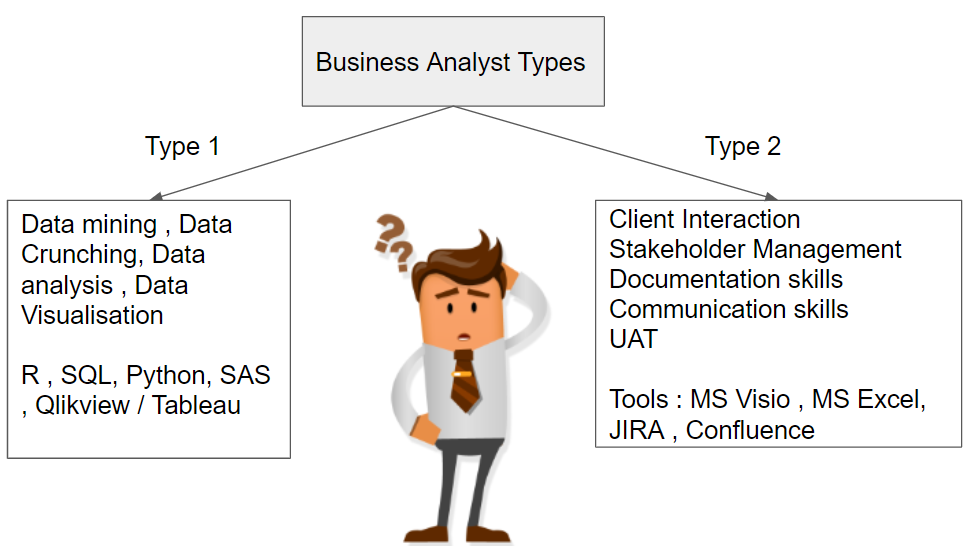Why the job responsibilities of a Business Analyst differ from company to company ?
Becoming a business analyst is not a tough task , but becoming an effective Business Analyst really requires one to have necessary set of skills and knowledge.
A business analyst who could improve the business’s productivity and thereby benefits his customers or client in generating more revenue is something you should strive for.
Nowadays, people are really confused seeing the varied definitions of Business analyst all around.
Every job advertisement of Business Analyst they see has some different requirements .
Some ask the candidates to be proficient in using R, SQL, Python, SAS etc. , while there are some others that usually ask the candidate to possess good documentation skills , be good in stakeholder management and should know the tools like MS Visio, MS Excel , JIRA , Confluence etc.
Why different job responsibilities for same Business Analyst ?
The reason behind the contrasting difference in both the job requirements is just a simple one. Although the names of both the profiles is Business Analyst, their roles and responsibilities differ to a great extent.
TYPE 1 of Business Analyst
The Business analyst profile where the company asks for the person to be good in R, SQL, Python, SAS basically wants someone who loves to play with the data.
They want a candidate who can perform activities like data mining , data crunching , data analysis and data visualization.

TYPE 2 of Business Analyst
On the other hand, the Business analyst profile where the key job responsibilities includes client interaction, stakeholder management, preparation of documents like BRD, FRD etc , Wireframing , Knowledge of tools like MS Visio, JIRA basically wants somebody who can collect the requirements from the company’s business clients and interprets the same into developer’s language.
These requirements could be related to the development of a new website for the client’s business, or development of a new mobile application.
It might even be possible that the company already has some product of their own (like Oracle, Adobe , Google, Facebook) and its product is being used by many other different companies in the market . In this case the product company might hire a business analyst to specifically cater to the changing needs of their clients.
The to-be hired business analyst might have to meet the company’s clients on a regular basis to understand if they need anything else to be modified in the product as per their business requirements.
So these Business analysts are supposed to remain in touch with their company’s clients to know if the client wishes to get any modification in the already implemented product .
Business analyst upon gathering the new requirements , change requests or enhancements needed by the client, check the feasibility of the requirements . They sit with the development team and discuss each and every requirement that comes from the client’s end.
Thereafter, a document is prepared which is known as Functional Specification Document (FSD) . This document lists down all the requirements conveyed earlier by the client in a more precise manner . It is a low level document and is made to tell the client that how the whole functionality of the requirements given would be achieved through development of new features or configuration/modification of already existing features.
This document is passed to the client on mail .
The client has to give a sign off on this document first to allow the developers to begin with the development. Without sign off, no development actually begins. Sign-off from the client means that the client agrees with what all is stated in the document and he is accepting everything that as been written in the document.
Although not complete or comprehensive, this is the role of an IT Business Analyst in the preliminary stages of an IT project.


